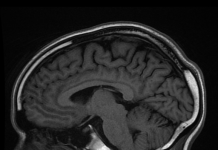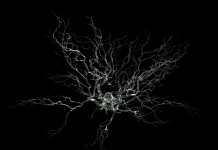Oxygen-28 (28O), the heaviest rare isotope of oxygen has been detected for the first time by Japanese researchers. Unexpectedly it was found to be short-lived and unstable despite meeting the “magic” number criteria of nuclear stability.
Oxygen has many isotopes; all have 8 protons (Z) in their nuclei but differ with regard to number of neutrons (N). The stable isotopes are 16O, 17O and 18O which have 8, 9 and 10 neutrons in their nuclei respectively. Of the three stable isotopes, 16O is most abundant constituting about 99.74% of all oxygen found in nature.
Recently detected 28O isotope has 8 protons (Z=8) and 20 neutrons (N=20). It was expected to be stable because it meets the requirement of “magic” number with regard to both protons and neutrons (doubly magic) but was found to short-lived and decayed quickly.
What makes nucleus of an atom stable? How positively charged protons and neutrons are held together in an atom’s nucleus?
Under standard shell-model of nuclear structure, protons and neutrons are thought to occupy shells. There is a limit on optimal number of nucleons (protons or nucleons) that can be accommodated a given “shell”. Nuclei are compact and more stable when “shells” are fully filled with a “specific numbers” of protons or neutrons. These “specific numbers” are called “magic” numbers.
Currently, 2, 8, 20, 28, 50, 82, and 126 are generally considered “magic” numbers.
When both number of protons (Z) and number of neutrons (N) in a nucleus equal “magic” numbers, its considered to be a case of “doubly” magic which is associated with stable nuclear structure. For example, 16O, the most stable and the most abundant isotope of oxygen has Z=8 and N=8 which are “magic” numbers and a case of doubly magic. Similarly, the recently detected isotope 28O has Z=8 and N=20 which are magic numbers. Hence, Oxygen-28 was expected to be stable but has been found to be unstable and short-lived in an experiment (though this experimental finding is yet to be validated in repeated experiments in the other settings).
Earlier, 32 was suggested to be new magic neutron number but was not found to be magic number in isotopes of potassium.
Standard shell-model of nuclear structure, the current theory explaining how atomic nuclei are structured seem to insufficient at least in the case of 28O isotope.
The nucleons (protons and neutrons) are held together in the nucleus by strong nuclear force. Understanding of nuclear stability and how elements are forged lies in the developing better understanding of this fundamental force.
***
References:
- Tokyo Institute of Technology. Research news – Exploring Light Neutron-Rich Nuclei: First Observation of Oxygen-28. Published: August 31, 2023. Available at https://www.titech.ac.jp/english/news/2023/067383
- Kondo, Y., Achouri, N.L., Falou, H.A. et al. First observation of 28O. Nature 620, 965–970 (2023). https://doi.org/10.1038/s41586-023-06352-6
- U.S. Department of Energy 2021. News – The Magic Is Gone for Neutron Number 32. Available at https://www.energy.gov/science/np/articles/magic-gone-neutron-number-32
- Koszorús, Á., Yang, X.F., Jiang, W.G. et al. Charge radii of exotic potassium isotopes challenge nuclear theory and the magic character of N = 32. Nat. Phys. 17, 439–443 (2021). https://doi.org/10.1038/s41567-020-01136-5
***






































